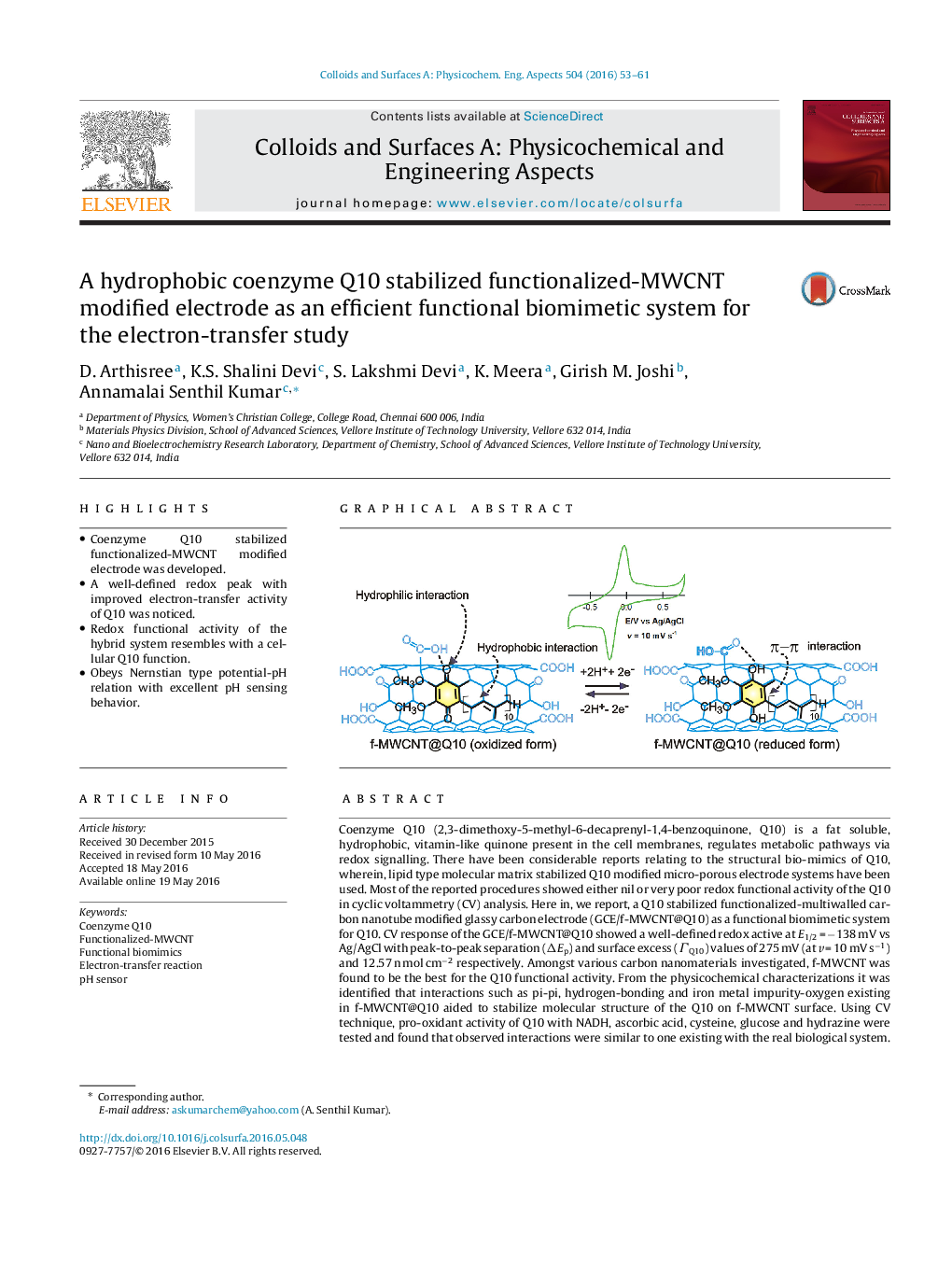| کد مقاله | کد نشریه | سال انتشار | مقاله انگلیسی | نسخه تمام متن |
|---|---|---|---|---|
| 591440 | 1453869 | 2016 | 9 صفحه PDF | دانلود رایگان |
• Coenzyme Q10 stabilized functionalized-MWCNT modified electrode was developed.
• A well-defined redox peak with improved electron-transfer activity of Q10 was noticed.
• Redox functional activity of the hybrid system resembles with a cellular Q10 function.
• Obeys Nernstian type potential-pH relation with excellent pH sensing behavior.
Coenzyme Q10 (2,3-dimethoxy-5-methyl-6-decaprenyl-1,4-benzoquinone, Q10) is a fat soluble, hydrophobic, vitamin-like quinone present in the cell membranes, regulates metabolic pathways via redox signalling. There have been considerable reports relating to the structural bio-mimics of Q10, wherein, lipid type molecular matrix stabilized Q10 modified micro-porous electrode systems have been used. Most of the reported procedures showed either nil or very poor redox functional activity of the Q10 in cyclic voltammetry (CV) analysis. Here in, we report, a Q10 stabilized functionalized-multiwalled carbon nanotube modified glassy carbon electrode (GCE/f-MWCNT@Q10) as a functional biomimetic system for Q10. CV response of the GCE/f-MWCNT@Q10 showed a well-defined redox active at E1/2 = −138 mV vs Ag/AgCl with peak-to-peak separation (ΔEp) and surface excess (ΓQ10) values of 275 mV (at v = 10 mV s−1) and 12.57 n mol cm−2 respectively. Amongst various carbon nanomaterials investigated, f-MWCNT was found to be the best for the Q10 functional activity. From the physicochemical characterizations it was identified that interactions such as pi-pi, hydrogen-bonding and iron metal impurity-oxygen existing in f-MWCNT@Q10 aided to stabilize molecular structure of the Q10 on f-MWCNT surface. Using CV technique, pro-oxidant activity of Q10 with NADH, ascorbic acid, cysteine, glucose and hydrazine were tested and found that observed interactions were similar to one existing with the real biological system. The f-MWCNT@Q10 system showed efficient pH sensing ability with Nernstian type proton-electron transfer mechanism.
Figure optionsDownload as PowerPoint slide
Journal: Colloids and Surfaces A: Physicochemical and Engineering Aspects - Volume 504, 5 September 2016, Pages 53–61
